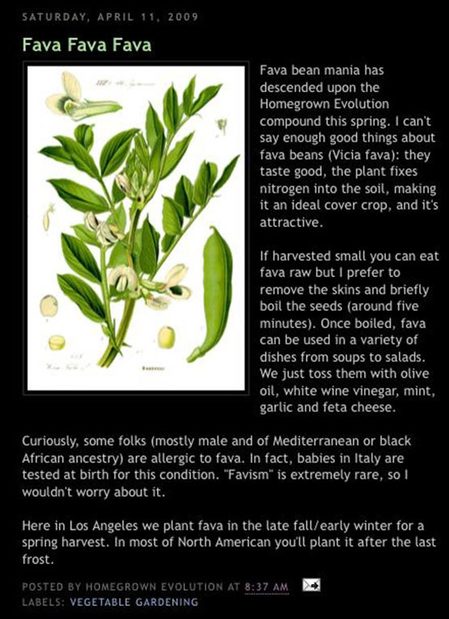Sent to you by David via Google Reader:
 Want to avoid eating pesticides without breaking the bank on organics? The handy "Shopper's Guide to Pesticides" makes it easy to keep track of which fruits and vegetables are likely to have bug spray all over them and which are not. Peaches, apples, bell peppers, celery, and strawberries head up the "dirty dozen" with the highest pesticide load. At the bottom: onions, avocados, frozen sweet corn, pineapple, and mangoes, which have so little pesticide, you're better off buying conventionally grown varieties (unless you're rich).
Want to avoid eating pesticides without breaking the bank on organics? The handy "Shopper's Guide to Pesticides" makes it easy to keep track of which fruits and vegetables are likely to have bug spray all over them and which are not. Peaches, apples, bell peppers, celery, and strawberries head up the "dirty dozen" with the highest pesticide load. At the bottom: onions, avocados, frozen sweet corn, pineapple, and mangoes, which have so little pesticide, you're better off buying conventionally grown varieties (unless you're rich).
A study by the Environmental Working Group found that "people people can lower their pesticide exposure by almost 80 percent by avoiding the top twelve most contaminated fruits and vegetables and eating the least contaminated instead."
Eating the 12 most contaminated fruits and vegetables will expose a person to about 10 pesticides per day, on average. Eating the 15 least contaminated will expose a person to less than 2 pesticides per day.
The guide is available as an iPhone app, a PDF, and printable HTML page. Unfortunately, it doesn't cover foods beyond fruits and vegetables, such as grains and meats. According to Consumer Reports, baby food, meat, poultry, eggs, and dairy should also head up the list of things you want to buy organically. Just make sure when doing so that you carefully read labels.
Labels including "USDA Organic/Organic," "Not Treated with rBGH," "No Hormones Administered or Added" and "Certified Humane" are the real deal. Products labeled "No Antibiotics Used or Administered/Raised without Antibiotics," "No Hormones Administered" and "Grass-Fed" might also be worth it, although there are loopholes that may make them less meaningful. Buyer beware as "Free Range," "Free Roaming," "Cage-Free" and "Natural" have such loose requirements that animals could still have been mistreated.
Shoppers Guide to Pesticides [Environmental Working Group]
Food Labels That Deserve Your Dollars [Reuters]
(Photo: travelinfool55)
Carrie McLaren & Jason Torchinsky are coeditors of Ad Nauseam: A Survivor's Guide to American Consumer Culture. In previous lives, they worked together on the hopelessly obscure and now defunct Stay Free! magazine .
Things you can do from here:
- Subscribe to Consumerist using Google Reader
- Get started using Google Reader to easily keep up with all your favorite sites
 As Oregon Trail teaches us, the easiest way to save a buck on meals for your family is by clicking "meager" every time during meals until someone dies of scurvy and there's more freshly-killed oxen meat to go around.
As Oregon Trail teaches us, the easiest way to save a buck on meals for your family is by clicking "meager" every time during meals until someone dies of scurvy and there's more freshly-killed oxen meat to go around. While grocery store brands increasingly swap out
While grocery store brands increasingly swap out  Ideally all of your digital photos would turn out crisp and clear every time; unfortunately that's not always the case. For those times they don't, this beginner's guide to sharpening your images in Photoshop is a good place to start.
Ideally all of your digital photos would turn out crisp and clear every time; unfortunately that's not always the case. For those times they don't, this beginner's guide to sharpening your images in Photoshop is a good place to start. Earlier this week, we showed you how to
Earlier this week, we showed you how to 


 The FDA has recommended that consumers stop using several different Zicam products because they have been associated with the
The FDA has recommended that consumers stop using several different Zicam products because they have been associated with the